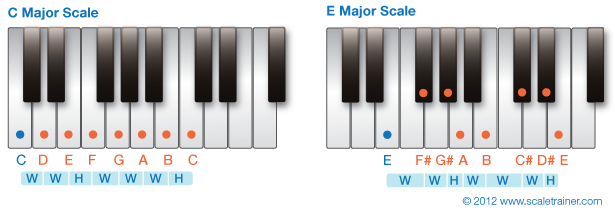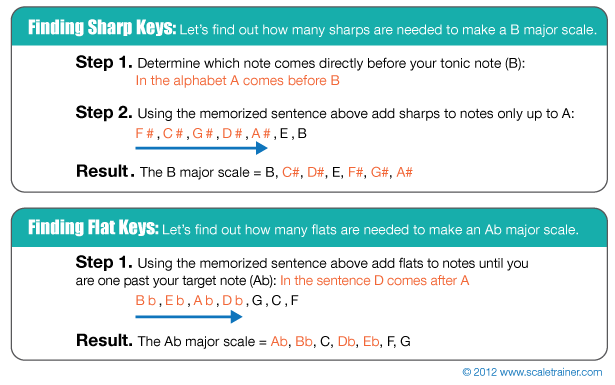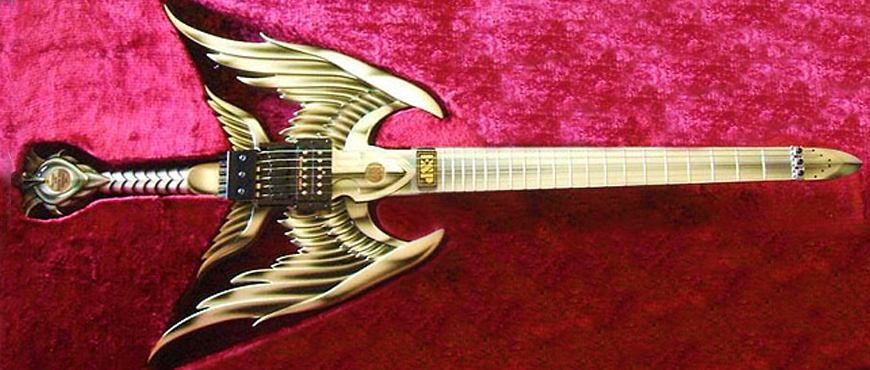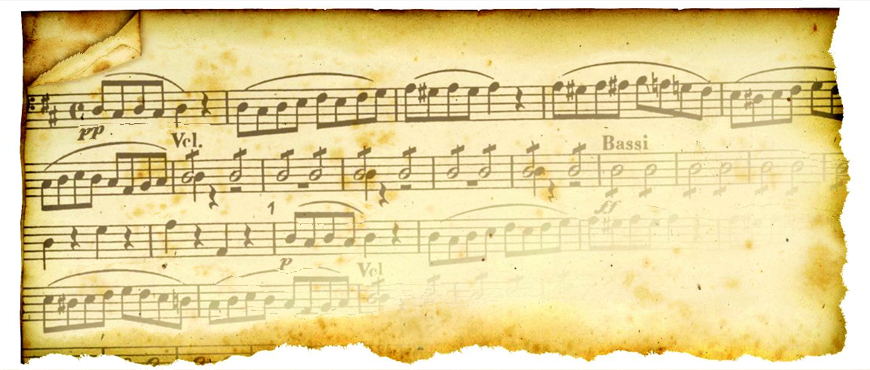
The Modes
September 4, 2015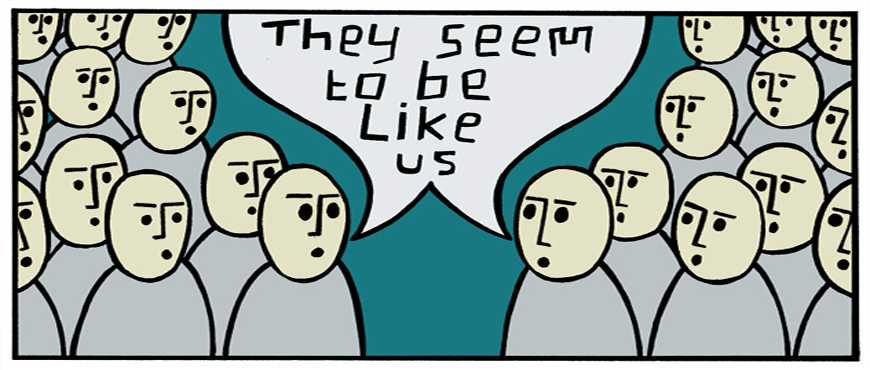
Enharmonic Equivalents
September 4, 2015Key Signatures
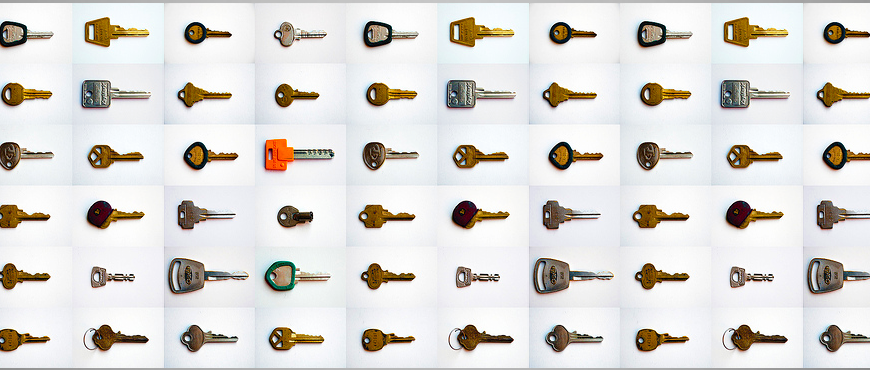
If you only ever wanted to play and write songs in the key of C major life would be simple.
You would never have to deal with sharps or flats.
However if you wanted instead to play in the key of E major you would need to alter your C major scale using four sharps to maintain the major scale formula:
W, W, H, W, W, W, H
The C Major Scale vs. The E Major Scale
So how do you keep track of which sharps and flats different major scales need?
Luckily, there are a few tricks to help you remember that.
Simply memorize the sentences below, once you do the rest is easy.
Sharps: are added to scales in a certain order (F, C, G, D, A, E, B) or:
Father Charles Goes Down And Ends Battles
Flats: are added in the opposite order (B, E, A, D ,G ,C ,F) or:
Battles End And Down Goes Charlie’s Father
Now you’re ready to figure out some key signatures. Let’s take a look at how to do that.

